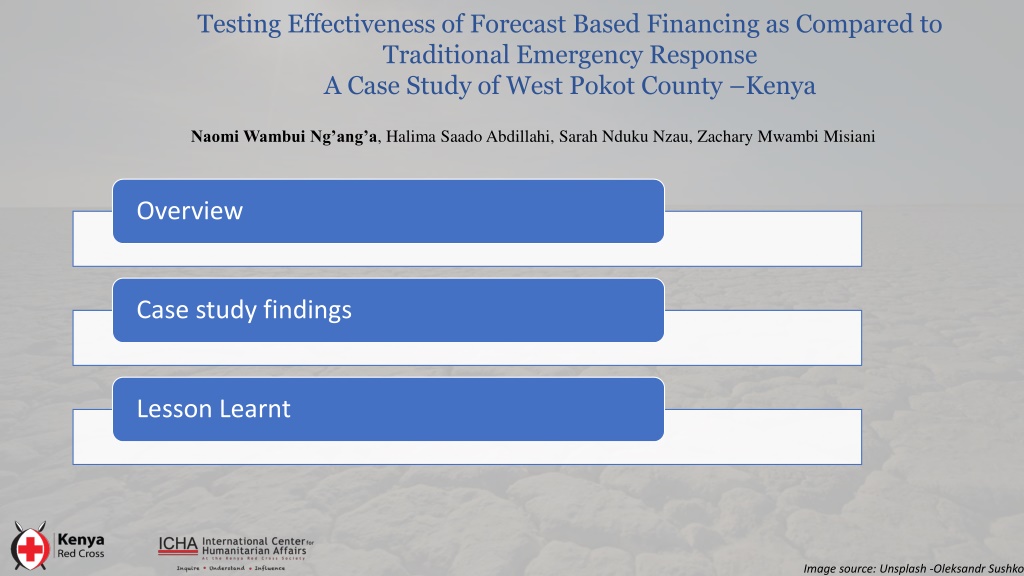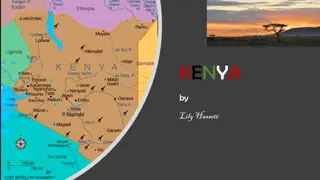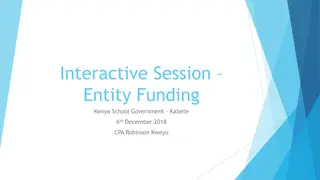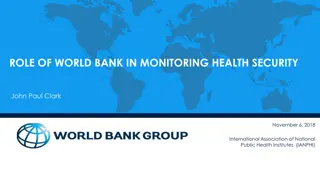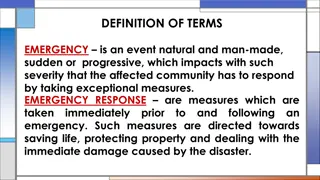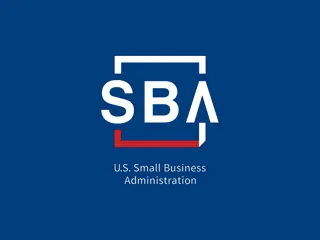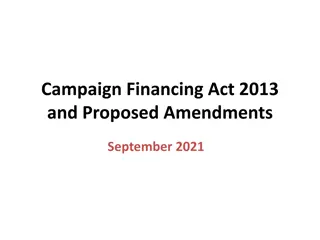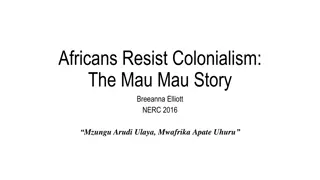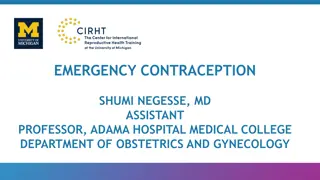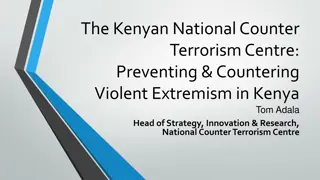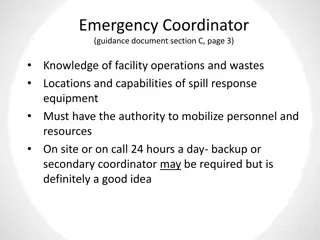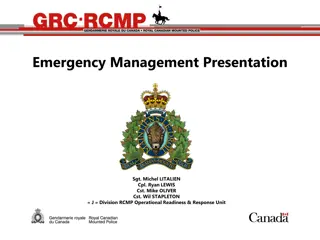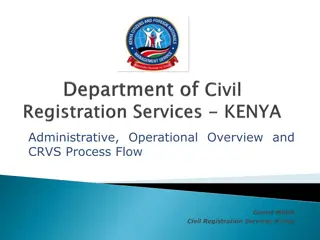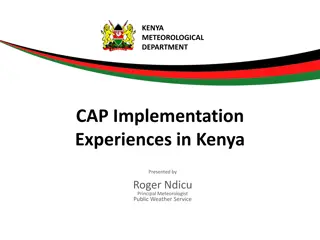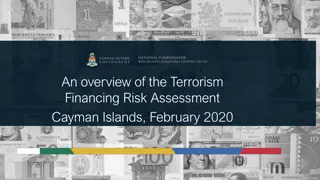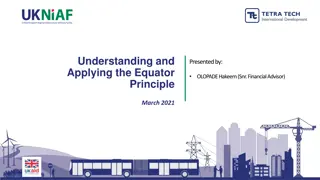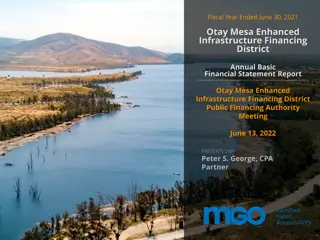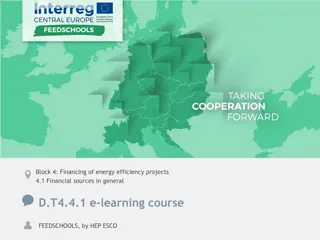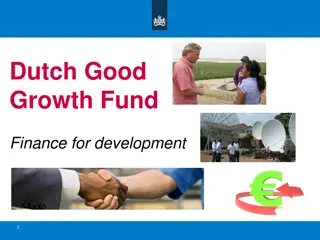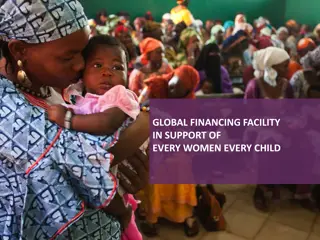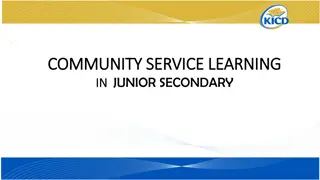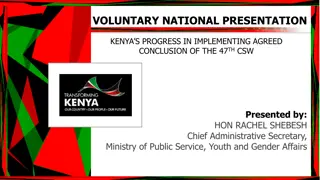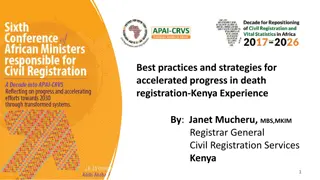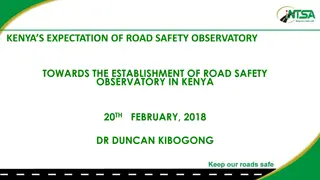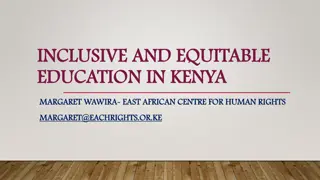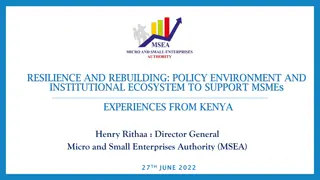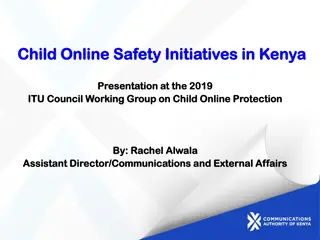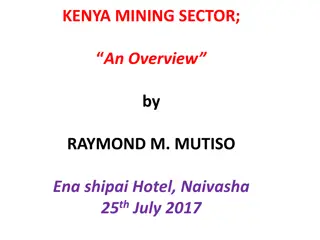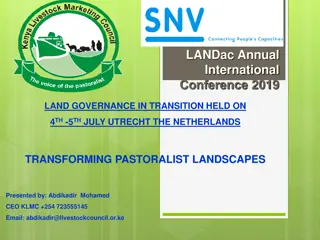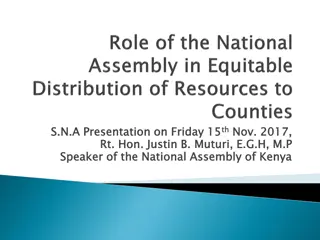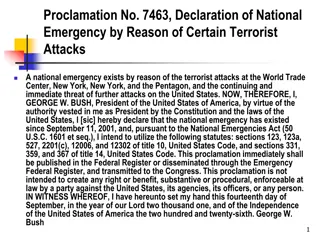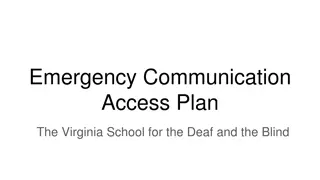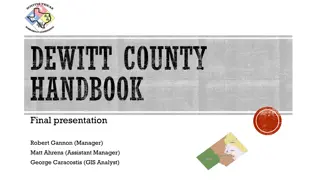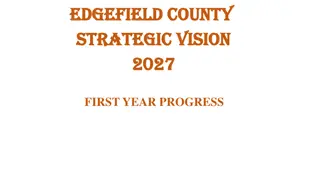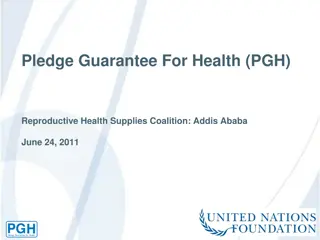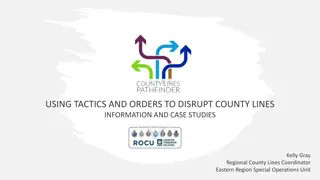Effectiveness of Forecast-Based Financing in Emergency Response: A Case Study of West Pokot County, Kenya
Extreme weather conditions are increasingly impacting regions worldwide, especially arid areas like West Pokot County, Kenya. To address these challenges, the Kenya Red Cross Society implemented a Forecast-Based Financing (FBF) system in partnership with the FBF technical working group. By testing the system and comparing outcomes with traditional emergency response methods through a quasi-experiment study, the effectiveness of FBF in mitigating the impacts of drought on vulnerable households was evaluated.
Download Presentation

Please find below an Image/Link to download the presentation.
The content on the website is provided AS IS for your information and personal use only. It may not be sold, licensed, or shared on other websites without obtaining consent from the author. Download presentation by click this link. If you encounter any issues during the download, it is possible that the publisher has removed the file from their server.
E N D
Presentation Transcript
Testing Effectiveness of Forecast Based Financing as Compared to Traditional Emergency Response A Case Study of West Pokot County Kenya Naomi Wambui Ng ang a, Halima Saado Abdillahi, Sarah Nduku Nzau, Zachary Mwambi Misiani Overview Case study findings Lesson Learnt Image source: Unsplash -Oleksandr Sushko
Introduction Extreme weather condition and variations are becoming the norm in many regions of the world Arid and semi-arid regions are particularly impacted by these climate hazards, posing a significant risk to the lives and livelihoods of millions of households According to climate change projections, frequency and intensity of extreme weather events are expected to rise globally, exacerbating existing humanitarian crises and creating new ones With no correspondence increase in funding, humanitarian organizations are therefore required to adapt and respond to changing circumstances Image source: RCRC Climate Centre
Introduction Anticipatory Action: implementation of preventive measures before disasters strike, mitigates the impacts on communities and reduces the time and cost of humanitarian response. Early Actions: Set of formal plans of activation and implementation Early action Protocol: formal plans that outline the early actions that will be taken when a specific hazard is forecasted to impact communities Forecast Based Financing: a proactive approach to disaster risk management that uses climate and weather forecasts to trigger and fund early actions before a disaster occur
Case study Between 2019- 2021, Kenya Red Cross Society (KRCS) in partnership with FBF- technical working group developed a drought FBF system with an aim of to minimising potential damage and loss of life by acting early, before the hazard reached its peak Risk scenarios; Historical hazards, vulnerability and adaptive capacity In 2021, KRCS tested its drought FBF system after attaining trigger thresholds indicating below average seasonal rainfall for October- November-December rains (KMD). This provided a good opportunity for real-time testing of effectiveness of the selected/prioritised early actions. VCI and SPI forecast Trigger level checking West Pokot county was identified as suitable location to activate early actions based on risk analysis done and on-ground monitoring reports KRCS implemented pre-agreed anticipatory actions to address water scarcity and food insecurity which had been prioritised as the primary impacts of drought Early actions are not implemen ted Early actions are not implemented To test effectiveness of conducting FBF compared to doing traditional emergency response, a quasi experiment study was conducted to measure different outcomes between AA beneficiary households and a comparison group of similar vulnerability who only received traditional disaster emergency response Early actions are implemented KRCS Drought FBF system Methodology
Case study-Data and Methods A total of 388 respondents participated in the survey where 260 were beneficiaries of AA while 128 were non- beneficiaries Respondents Distribution Simple random sampling (SRS) was used to select study participants within the selected clusters Beneficiary households were randomly sampled from the KRCS existing household registers of the AA beneficiaries Non- beneficiari es 33% For non-beneficiary group, the local enumerators snow- balled from one household of non-beneficiary (control group) to the next for purposes of interviews Both quantitative and qualitative methods were used to evaluate the impact of the intervention in reducing impacts of drought on households Beneficiaries of AA 67%
Findings-Demographic characteristics Participants in the treatment and control arm were similar in social demographic characteristics with no significant differences Majority of the respondents were female, this could be because it is women who remain behind at home to do domestic chores However, most of the households heads were reported to be male suggesting that the power to make major decision in the households lay in the hands of men. Gender of Household Head Households with children under the age of five Participant's Gender Distribution 62.5% 76.5% 73.8% 57.3% 67.2% Anticipatory Action beneficiary 42.7% Anticipatory Action beneficiary 37.5% 71.9% 32.8% Emergency Response beneficiary 23.5% Emergency Response beneficiary Anticipatory Action beneficiary Emergency Response beneficiary Female Male Female Male
Findings-Demographic characteristics Participants in the treatment and control arm were similar in education level and income sources, with no significant differences Only, about a tenth (13.5%-AA beneficiaries; 11.7%- AA non-beneficiaries) had attained secondary or tertiary education likely because the target locations were mainly rural areas Household Head Income source Household Head Education Level 63% 55% 65% No School 56% 23% Primary School 22% Anticipatory Action beneficiary 30% 17% 15% 10% Emergency Response beneficiary 7% 5% 7% Emergency Response beneficiary 3% Secondary School 2% 1% 1% 10% Anticipatory Action beneficiary Farmers Casual labour Petty trading Permanent job No income Others 5% e.g., sale of firewood Tertiary/University/college 3% 1% Vocational School 0%
Findings- Food Security Food utilization More (41.8%) children under-five from beneficiary households had three meals and some food/snack in between as is required compared to 31.6% from non-beneficiary households (p=0.12) Majority (74.7%) of adults in AA households ate between two to three meals the day preceding this survey compared to 64.8% Emergency Response counterparts (p=0.056) Dietary scores Majority (65%) of the AA beneficiaries had a dietary diversity of above 43 which implies that households were food secure compared to only 43.8% of the AA non-beneficiaries (p=0.00) Few (16.9%) anticipatory actions beneficiaries were moderately food insecure (dietary scores 28.6-42) compared to 32.8% of their Emergency Response Counterparts (p= 0.00) In addition, fewer (18.1%) AA beneficiaries were severely food insecure (dietary scores <28.5) compared to 23.4% of the Emergency Response counterparts (p=0.27) This indicates that households which beneficiated from anticipatory action were better fed than those from Emergency Response households
Findings- Food Security Anticipatory Action beneficiary Mean Emergency Response beneficiary Mean Coping mechanism P.value Borrowed food 3.6 4.1 0.07 Coping mechanism AA beneficiaries utilised negative food coping strategies lesser number of times (2.5) as compared to emergency response beneficiary households (2.9) Reduced number of meals eaten in a day 3.7 4.2 0.24 Limited meal sizes/portions 1.9 2.2 0.20 Although the difference in the coping index was not statistically significant (p= 0.23), the results provide a good indication that the intervention reduced utilization of negative food coping strategies among beneficiaries sampled Restrict consumption for adults so children have enough 1.9 1.9 0.95 Rely on less preferred, less expensive foods 1.7 2.1 0.13
Results- Water scarcity More (14.9%) beneficiaries than (3.3%) non-beneficiaries obtained water from boreholes (p= 0.03) hence access to cleaner and safe water Beneficiaries took much less time to fetch water as compared to nonbeneficiaries More (38.8%) beneficiaries than non-beneficiaries (29.5%) took less than 30 mins to collect water (p= 0.28) Fewer (43.0%) beneficiaries compared non-beneficiaries (52.5%) spending between 30mins- 1hour to collect water (p= 0.29) Notable changes in water due to AA included: Cleaner/safer water (96.7%); reduction in cases of water borne diseases (5.0%); reduced amount of money spent on water thus spending elsewhere (8.3%); and households improved hygiene (38.8%)
The direct cost of WASH totalled to KES 3,600,000 (USD30,0000) A total of 418 households were able to access water from the three rehabilitated boreholes Used SPHERE standards to calculate demand for water per household. where, Cost benefit analysis- WASH Members of a household consumes 15litres per person per day; Domestic animals require 20 litres per animal per day Average cost of water is KES 35 for 20 litre jerrican An average household size of 6.9 in West Pokot County; The very poor population who are targeted by anticipatory action have an average of 6 shoats, no cattle Averaging consumption per household per day was 223.5 litres Average amount spend per household per day was KES 390.95 (USD 3.25) Benefit to cost ratio= Total amount of money households would use to meet water demand for three months Total cost of implementation of the WASH actions Benefit to cost ratio =?.?? ??? ?? =???,??? ??,???= ?.?? 30000
Cost benefit analysis- Food Security The direct costs of implementing anticipatory actions under livelihoods and basic needs was KES 3,600,000(USD30,0000) A total of 1000 households were provided with drought tolerant seeds 270kgs (75kgs kept for household consumption;195kg sold @ KES150 per kg) Average income was KES 29,250 (USD243.75) per household Benefit to cost ratio= Total amount of money households would use to meet water demand for three months Total cost of implementation of the WASH actions Benefit to cost ratio =???.?? ???? =???,??? ??,???= ?.?? 30000
Lesson Learnt To ensure timely implementation of AA, it is necessary to combine community knowledge of seasons with scientific forecasts and streamline institutional readiness. Community participation and stakeholder coordination are essential for the successful implementation of AA. Flexible funding is the most effective way to take early action in the window of opportunity between forecast and disaster.
Anticipatory actions had statistically significant impact on food dietary diversity and access to clean water Additionally, beneficiaries of anticipatory actions recorded positive impacts on food access, food security, food coping strategies and access to water sources Conclusion Cost benefit analysis showed that Anticipatory actions have a higher benefit to cost ratio, indicating their cost-effectiveness and return on investment
